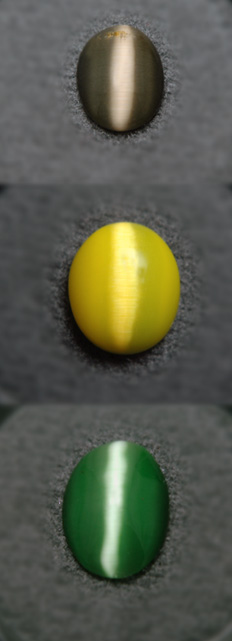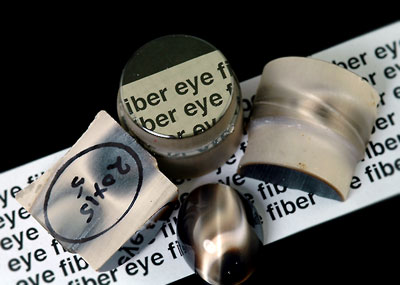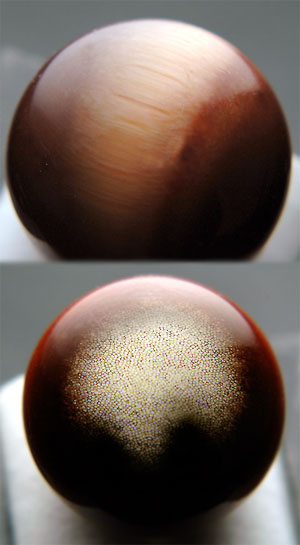| So what do you do with old fiber optic cable or extra scarps? You impregnate the cable with a silica based glue containing a colorant and then fire it back to a solid glass without melting the original fibers.
It can then be cut into various shapes and exhibits "chatoyancy" on two axis. Chatoyancy is the optic phenomena caused by light entering a fibrous material which is encased in a transparent or translucent medium. The light "rides the fiber" and creates a cats eye effect.
When the light strikes the stone at a right angle to the fibers, it is reflected back in a wave forming a bright line on the surface. The cabochons (commercially cut at the left show the cats eye effect nicely
The sphere shown below shows the cats eye effect in one direction, but when viewed end on (down the fiber bundle) you can see the individual structure of the original fibers. It is obvious that the glass fibers are still transparent and that the color is highly centralized in the spaces between the fibers.
A fun and very inexpensive material that can be obtained in spheres, cabochons, and many carved shapes.
It is sometimes called "Fiberlite" or "Fibereye".
|




